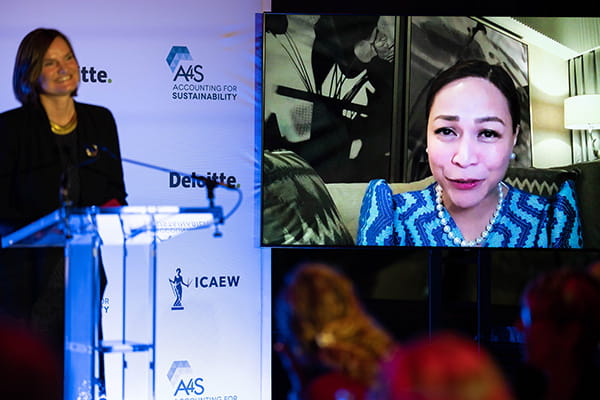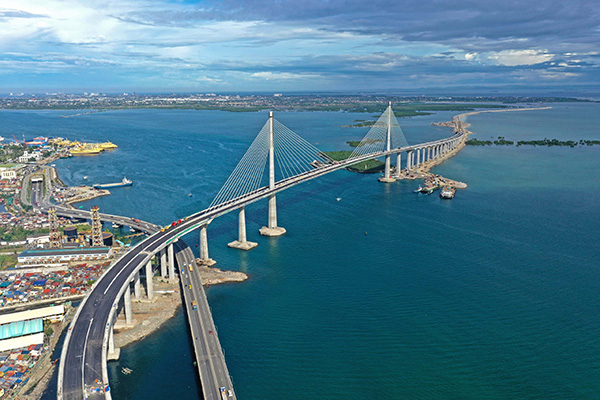What?
Based in the Philippines, Metro Pacific Investments Corporation (MPIC) is an infrastructure investment group that has embedded sustainability into the core of its governance, strategy and operations. All MPIC’s holding companies are required to design, build and operate with minimum environmental and social disruption.
An EESG lens – encompassing economic, environmental, social and governance factors – is applied to decision making and risk management throughout the group. The EESG approach has enabled the group to shift from standard risk management towards a holistic view of value creation and business resilience. MPIC’s CFO is at the centre of this shift, having primary responsibility for risk and sustainability as well as finance.
The three focus areas of MPIC’s sustainability framework are progress, people and planet. These are supported by six sustainability pillars, including resilient infrastructure and operations, workforce excellence, and environmental and social stewardship. Each pillar has been mapped to the UN Sustainable Development Goals and is also linked to specific business objectives and metrics.
As a result of MPIC’s integrated approach, the group has a range of investments, partnerships and programmes in areas such as renewable energy generation, biodiversity conservation, and waste management.
MPIC seeks to ramp up investments in the agricultural sector to reduce the country’s dependence on food imports amid global supply chain disruptions and high inflation.
It is clear that MPIC live their purpose and that sustainability is embedded across the organisation. The judges were impressed with the commitment from the Chief Finance, Risk and Sustainability Officer and the way MPIC operationalise sustainability in how they run their business and make decisions.
Why?
MPIC’s purpose is to contribute to national progress and uplift the lives of Filipinos and the communities it serves. This purpose is at the heart of everything the group does. By strengthening public infrastructure, MPIC aims to generate a financial return while widening access to essential services and improving economic and developmental outcomes in the Philippines.
A catalyst for MPIC’s work on climate was the devastation caused by a major typhoon that hit the Philippines in 2013. Thousands of people died and 4 million were displaced. This event made the human cost of climate change, and the extreme weather events that come with it, clear. MPIC was moved to do whatever it could to reduce the likelihood and impact of future natural disasters, not only for the benefit of its own business but for people and communities in the country as a whole.
As a major provider of infrastructure, MPIC felt it could play a key role in tackling climate change by reducing the carbon footprint of its developments and preserving the natural carbon sinks within the Philippines. At the same time, the group ensures it designs resilient infrastructure that can withstand extreme weather events.
Sustainability was championed by us in finance. We have been able to make sustainability personal to everyone by articulating the impact of sustainability to the business, to us as individuals and to our existence as humanity.

How?
MPIC applies its integrated EESG approach at every level of its governance and operations:
- All of MPIC’s core businesses are represented on the board, which oversees sustainability programmes through a governance and sustainability committee. At senior management level, a group sustainability council made up of sustainability and finance staff meets monthly to harmonise sustainability strategies, policies and practices across the group. This is chaired by the CFO.
- Staff at all levels of MPIC have social and environmental metrics included in their performance appraisal, which was driven by employees’ own enthusiasm for sustainability. MPIC’s staff recognise that protecting the environment and supporting local communities affects not just the business but also their families and communities. For MPIC, this means that sustainability is not just a topdown approach – employees are actively engaged across the organisation, finding ways to integrate sustainability into their work.
- MPIC chose to be an early adopter of TCFD to help it identify and manage climate-related risks. The results of its TCFD scenario analysis led the group to strengthen its network equipment and infrastructure. Since then, MPIC has moved from standard risk management to a holistic view of value creation and business resilience. Under its resilience strategy, risks identified under each of the group’s risk categories are mapped to the relevant EESG impacts. › Similarly, MPIC also broadened its due diligence process to reflect the EESG approach. Initially, the group’s business development and investments policy only covered financial and legal due diligence. The updated policy added environmental and social impact assessments to the process. The policy also identifies business areas that are not in line with MPIC’s sustainability goals and are specifically excluded from investment.
- Due diligence for new investments is led by the business development team, which assesses the proposed investment and completes each element of the EESG due diligence checklist. Either the CEO or the CFO must then approve the new investment. For significant investments, the next stage is finance committee scrutiny. This committee is made up of senior managers and representatives from the board.
- As well as its investments, MPIC considers EESG factors in its internal operations. The group aims to minimise its energy use. These kinds of initiatives are incentivised by environmental and social KPIs.
- MPIC prepares an integrated report that is jointly delivered by sustainability and finance teams, reporting to the CFO. This replaces MPIC’s previous standalone sustainability report and annual report.

Supporting sustainable development: two examples
Waste management and renewable energy
Waste management is a significant issue in the Philippines. MPIC explored new technologies and approaches for sustainable waste management to come up with an initiative that could help address the problem.
Drawing on its research, the group established METPower Venture Partners, a start-up company that generates renewable energy from waste products. METPower’s two plants convert pineapple waste into biogas, a form of clean energy.
The biogas project is a recognised project under the Japanese government’s official offsetting scheme, the Joint Crediting Mechanism. MPIC generates additional revenue by selling half of its carbon offsets from this project to the Japanese government.
Building the Cebu–Cordova bridge
Preserving natural resources is a priority for MPIC.
The most cost-effective and efficient design for a bridge linking Cebu to Cordova – a link of strategic importance for the Philippines – would have taken the bridge through 300 hectares of mangrove trees.
The mangrove ecosystem is a breeding ground for fish. Disturbing the area would have directly affected the livelihoods of communities of fisherfolk and also eroded the land of local communities.
Applying its EESG framework, MPIC chose to build a curved bridge that would avoid the mangrove ecosystem instead of a straight bridge. This design cost more but the cost was outweighed by the importance of preserving a critical natural resource.
Download the case study
Want a copy of this case study? You can download a PDF version using the link below.
